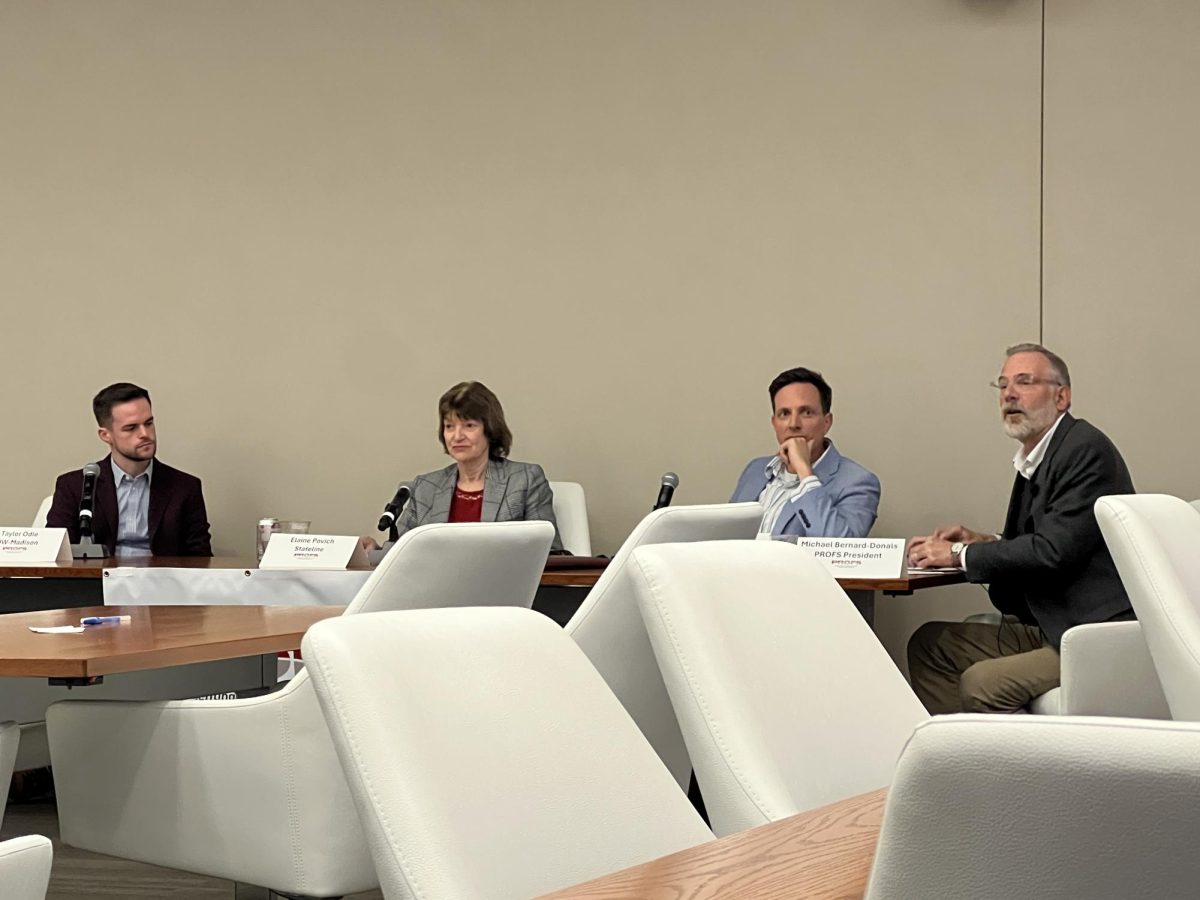Attine ants — the first animals to deliberately start growing their own food — have caught the attention of some University of Wisconsin researchers.
The ants, who have been tending gardens of fungus for 50 million years, get help from antibiotic-producing bacteria which is carried on their backs and wards off parasites that decimate their crops.
In an article published in last month's issue of the journal Science, an international team spearheaded by UW bacteriologist Cameron Currie described the mutualistic relationship between ants, fungus and bacteria as one which has probably been evolving as long as ants have been growing fungus.
The ants harbor the bacteria in specialized crypts on their bodies, providing the bacteria with nutrients; in response, the bacteria produce antibiotics that target the parasitic fungi that attack the ants' gardens.
Currie said the main objective of the paper was to show the extent to which the ants have physically adapted to house the bacteria on their bodies.
"That's evidence of the crucial role of the bacteria because the ants are so modified for maintaining it that it indicates they really aim to protect it," Currie said. "It also indicates that the bacteria have been present since the early stages."
It is also important that even the most basal — or least evolved — of the ant species have bacteria, said Michael Poulsen, a post-doctoral researcher who works with Currie.
"[This] is probably the main reason for believing it has been going on for so long," Poulsen said. "Another thing is that it's unlikely that these modifications would have independently evolved multiple times."
If this relationship has been evolving for so long without the parasites developing resistance to the antibiotics the bacteria produce, then it is possible there is some mechanism preventing that from happening, Currie said. This might help in the ongoing struggle in the medical field to prevent resistance to human pharmaceuticals, he added.
And it could also shed light on how humans relate to the over 2,300 bacteria that reside in their bodies, said Margaret McFall-Ngai, a UW professor of medical microbiology and immunology.
"If we can get some idea of how simpler relations evolved between bacteria and animals, then we can understand more about co-evolution in higher forms, even between humans and bacteria," McFall-Ngai said.
Researchers are attempting to determine exactly which antibiotics are being produced by the bacteria harbored in the attine ants and whether these antibiotics would be helpful for human use.
Though Poulsen said it is not likely that the antibiotics could be used for human drugs, he said it will provide valuable information into how these bacteria have been so successful for so long.
"If we want to get answers to those types of questions, we need to identify the antibiotics," Poulsen said. "We might find out what genes code for these antibiotics, and that might help us, either directly or indirectly, answer questions like how [the bacteria] has remained successful."
Currie has been conducting research on attine ants and their fungi for most of his academic career and was the first to recognize that white bumps on the ants, previously dismissed as "waxy blooms," were actually bacteria.
"He is clearly a pioneer in a field," says McFall-Ngai. "I think he's developing and bringing to light some basic principles of how animals relate with bacteria. He is clearly making benchmark discoveries."
Currie's team's latest project involves extracting the different parasites that attack the fungi and determining which bacteria inhibit each specific parasite.
Surprisingly, Currie said, there is a lot of variation in the ability of the bacteria to fight the different pathogens — some bacteria can kill only one strain, and others can repel all of them.
"So it suggests the antibiotics being produced are very diverse depending on the strain of bacteria, and it is likely that they evolved together," Currie said. "The pathogen has evolved to the bacteria, and the bacteria have evolved to the pathogen."
This implies that the bacteria and parasites have been involved in a co-evolutionary battle, Currie added. At some point, the parasites might have become resistant to the bacteria and in turn the bacteria adapted.
And insights about evolution between all living things can be drawn from the relationships that have developed between these organisms, he said.
"We're interested in how this has played out over time, how this complex mutualism has remained stable," Currie said. "How have the ants been effectively utilizing these bacteria and their antibiotics for millions of years? That might be of a lot of evolutionary interest, but also to the medical and biochemical fields as well."












